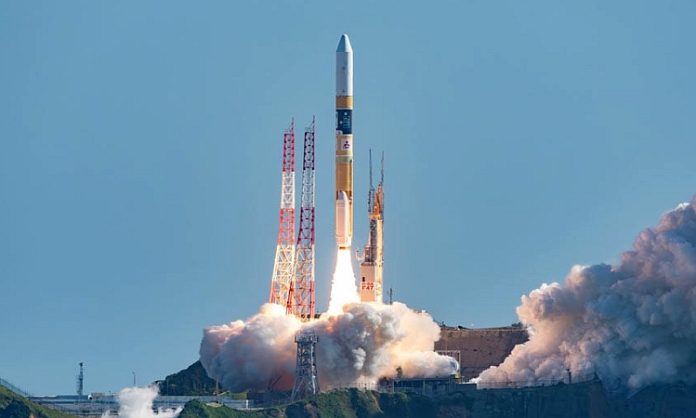Tanegashima (Japan): Close on the heels of success of ISRO’s Chandrayaan-3 mission, Japan on Thursday launched an H2-A rocket, carrying a lander and X-ray telescope, to conduct probe on the Moon surface and explore the origins of the universe, reported news agencies.
Reports said that the rocket lifted off from Tanegashima Space Center in southwestern Japan was shown on live video by the Japan Aerospace Exploration Agency, known as JAXA. “We have a liftoff,” the narrator at JAXA said as the rocket soared up, leaving behind a cloud of smoke in the Pacific.
Also Read: ISRO’s moon mission turns in sleep mode after lander’s hopping
The spacecraft has placed the X-ray imaging and Spectroscopy mission (XRISM) in to the Earth’s orbit after 13 minutes of its launch. The equipment will measure the speed and makeup of what lies between galaxies. The study carried out by the telescope will help study the formation of celestial objects and try to solve the mystery of how the universe was created, JAXA said.
JAXA in collaboration with NASA will also look at the strength of light at different wavelengths, the temperature of things in space and their shapes and brightness.
David Alexander, director of the Rice Space Institute at Rice University, believes the mission is significant for delivering insight into the properties of hot plasma, or the superheated matter that makes up much of the universe. Plasmas have the potential to be used in various ways, including healing wounds, making computer chips and cleaning the environment.
Also Read: Russia’s lunar spacecraft, Luna-25, crashed on Moon’s surface
“Understanding the distribution of this hot plasma in space and time, as well as its dynamical motion, will shed light on diverse phenomena such as black holes, the evolution of chemical elements in the universe and the formation of galactic clusters,” Alexander said.
The spacecraft also carry Smart Lander for Investigating Moon, or SLIM, a lightweight lunar lander. Unlike Vikram lander, SLIM will not orbit the moon for three-four months and launch. According to JAXA, smart lander will attempt landing on the moon’s surface next year. The lander successfully separated from the rocket about 45 minutes after the launch and proceeded on its proper track to eventually land on the moon. JAXA workers applauded and bowed with each other from their observation facility.
JAXA is developing “pinpoint landing technology” to prepare for future lunar probes and landing on other planets. While landings now tend to be off by about 10 kilometers (6 miles) or more, the Smart Lander is designed to be more precise, within about 100 meters (330 feet) of the intended target, JAXA official Shinichiro Sakai told reporters ahead of the launch.
Also Read: NASA, ISRO to launch Nisar satellite for dipper study of earth
Japan launched the mission at a time when the countries into space adventure is taking up the challenge to launch probe on the Moon. So far, only four national including India, have successfully landed their probe in the Earth’s only natural satellite. Russia also made an abortive bid to launch its probe on the lunar surface when its spacecraft went out of control at the last moment and crash-landed in April.
Japan’s space program has been marred by recent failures. In February, the H3 rocket launch was aborted for a glitch. Liftoff a month later succeeded, but the rocket had to be destroyed after its second stage failed to ignite properly. Japan has started recruiting astronaut candidates for the first time in 13 years, making clear its ambitions to send a Japanese to the moon.




